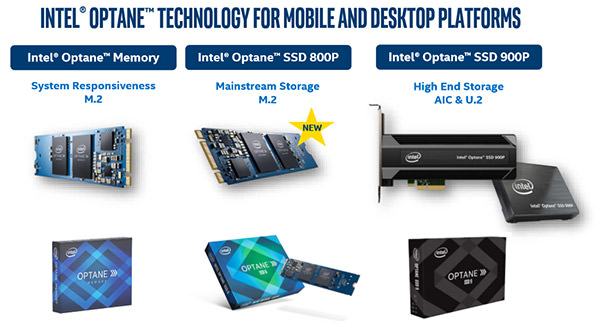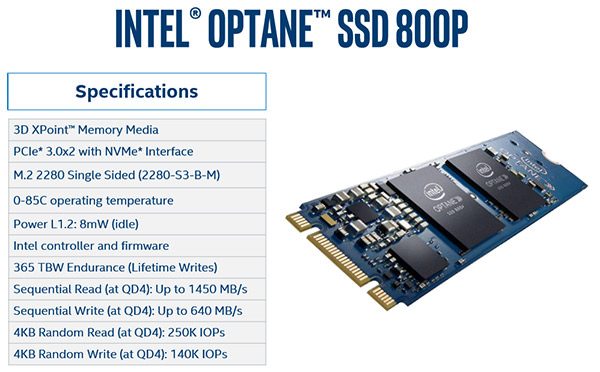Intel introduces the new Optane 800P SSD, designed for home PCs
Intel’s range of SSD for domestic customers is expanding, with the presentation of two very unique units that take advantage of Optane technology, with very low latencies and other advantages over SATA SSD. Here are some details.
To make a brief summary, we can say that the Optane units exploit chips with a very different technology than that of the common SSD, even of Intel itself, since they rely on what is called 3D XPoint. Intel has put a bit ‘of his to confuse the end user, releasing two types of products, as seen in the image that follows.
” Optane Technology ” includes two completely different product categories, namely Optane Memory and Optane SSD. The first is a line of SSD caching, to be combined with a mechanical hard disk and promising a leap forward in general performance without giving up the storage space.
Obviously, this is a solution for desktop systems. The second concerns real SSD, which should not be combined with anything (in theory, we’ll see later), equipped with the XPoint 3D technology.
 What does this technology promise? In addition to high transfer rates, being equipped with a PCIe x2 or x4 interface and a NVMe protocol, it is very low latencies that promise sparks in terms of IOPS and reactivity in general. Today, Intel has introduced a new line of SSD that falls into this category, with the name of Intel Optane SSD 800P.
What does this technology promise? In addition to high transfer rates, being equipped with a PCIe x2 or x4 interface and a NVMe protocol, it is very low latencies that promise sparks in terms of IOPS and reactivity in general. Today, Intel has introduced a new line of SSD that falls into this category, with the name of Intel Optane SSD 800P.
 As can be seen from the table we are facing an SSD in the M.2 2280 format with a PCIe 3.0 x2 interface, with a maximum reading speed of 1450MB/s and writes up to 640MB/s. In terms of IOPS the values are 250k in reading and 140k in writing, referring to the random 4k scenario.
As can be seen from the table we are facing an SSD in the M.2 2280 format with a PCIe 3.0 x2 interface, with a maximum reading speed of 1450MB/s and writes up to 640MB/s. In terms of IOPS the values are 250k in reading and 140k in writing, referring to the random 4k scenario.
The life cycle is really high, another advantage of XPoint 3D technology, as it speaks of 365TBW. The cuts available are small, at least for now: there is the variant of 58GB and 118GB, offered respectively at the declared prices of $129 and $199.
Many will be disappointed by the transfer rate values in MB/s, but there are other parameters to take into account regarding latencies, performance in full disk situations, RAID and behavior based on the Queue Depth. All of which we will talk about tomorrow. Keep following us!
Product prices and availability are subject to change. Any price and availablility information displayed on Amazon at the time of purchase will apply to the purchase of any products.

